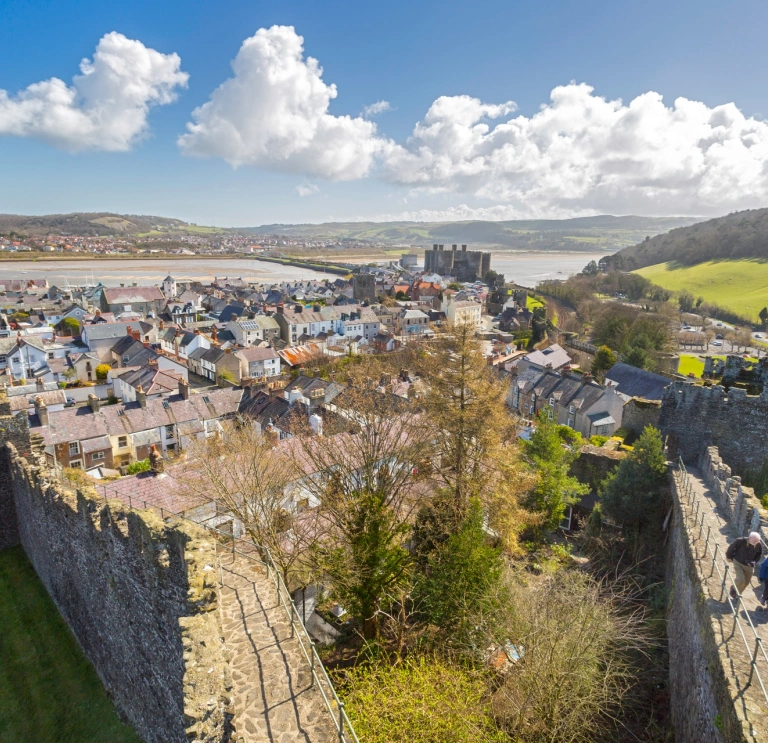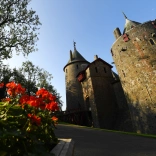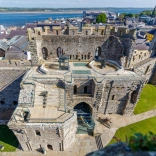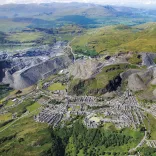Inscribed onto the UNESCO world heritage list in 1986 for their unique contribution as “the finest examples of late 13th century and early 14th century military architecture in Europe”, the Castles and Town Walls of Edward I are astonishingly well preserved. Comprising the castles of Beaumaris and Harlech; and the castles and town walls of Caernarfon and Conwy, they are managed by Cadw, the Welsh Government’s historic environment service.
Castell Conwy (Conwy Castle) and town walls
Castell Conwy (Conwy Castle)
Work on the castle and its town walls started in March 1283 and was completed within four and a half years. Stripped of its lead and timbers after the English Civil War, its walls still stand complete. It is the quintessential castle, atmospheric and fairytale in appearance. A walk along the walls offer fantastic views.
The castle has interpretation boards to help envisage the most complete surviving set of royal apartments in Wales, as well as a model and exhibition. Highlights include the Royal Chapel in the North East Tower, mason’s marks in the Stockhouse Tower, the Great Hall which stands to its full height, and the views from the wall walks.
Group visit information: Gift shop and toilet facilities are on site. Coach drop-off point makes access easy. Recommended visit time 1hr. Limited access for anyone with mobility issues. Local guides are available for pre-booked tours.
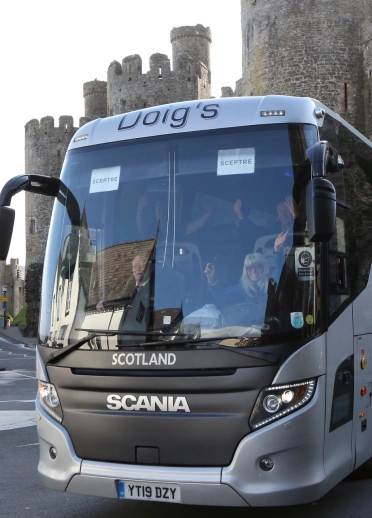
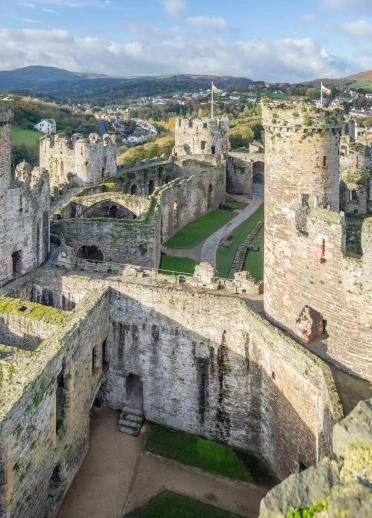
Conwy town walls
The town walls are dramatic and run for 0.75 miles (1.2 km) which include 21 towers and three gateways. They are free to visit apart from sections inside the castle, which are accessible during castle opening hours. A walk along the town walls and the steep climb to the Upper Gate is worth it for the fantastic views and photo opportunity.
Built as an integral part of the fortification to protect the new town, they remained unbroken until a new road bridge was built over the river Conwy in the 1950s. Evidence of the hygiene provision for Crown officials can be seen from the back of the Mill Gate, where a suite of twelve latrines (garderobes) were built for their convenience.
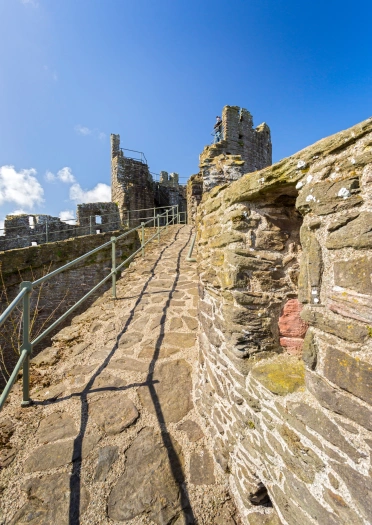
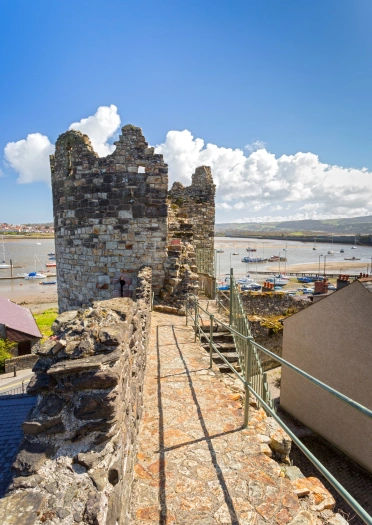
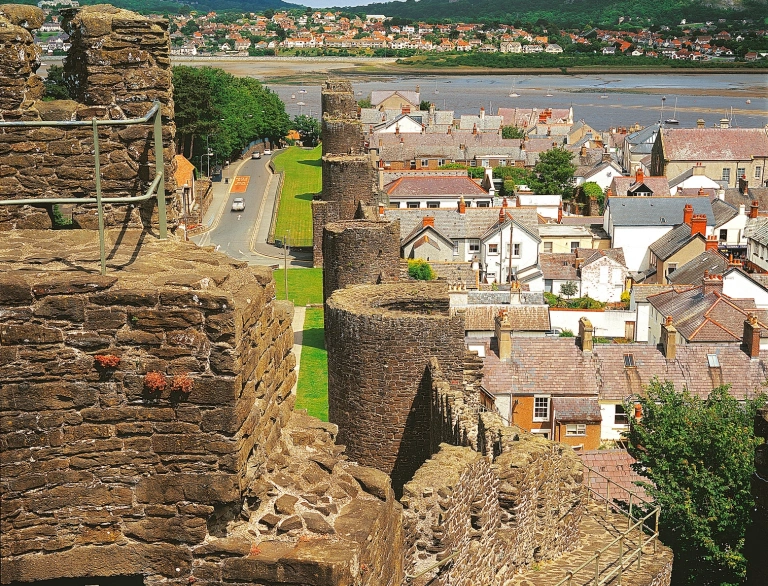
Conwy town and harbour
The town retains much of its medieval character. The street layout and 15th century Aberconwy House give a good insight into its past. The Tudor mansion Plas Mawr on Castle Street is acknowledged as one of the finest examples in Britain. Conwy is also proud of its food traditions, with a number of shops, restaurants, and cafés offering a wide selection of locally sourced produce. Locals would recommend fish and chips or a plate of Conwy mussels available throughout the town. Recommended visit time 1hr.
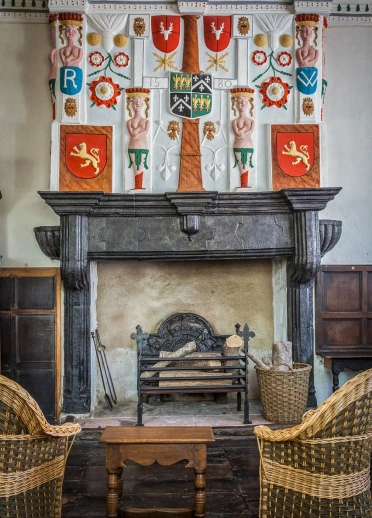
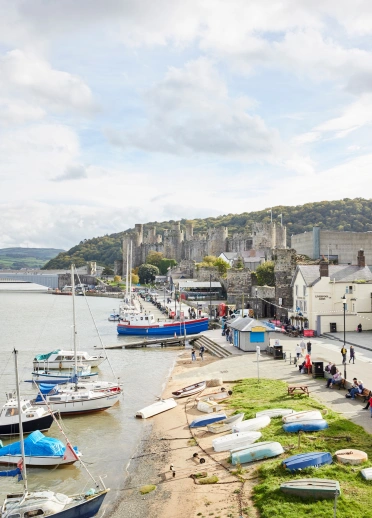
Castell Caernarfon (Caernarfon Castle) and town walls
Castell Caernarfon (Caernarfon Castle)
With its multangular towers, limestone and patterned walls, the castle has echoes of the Roman city of Constantinople. It was chosen as the centre of Edward I’s administration in Wales and was the birthplace of his son Edward, the first English Prince of Wales. Today it is famous for the Investiture of Prince Charles in 1969 (now King Charles III). Access to the Royal Welch Fusiliers’ Museum is included in the entrance fee. There are fantastic views and photo opportunities from the battlements of the Eagle Tower.
Group visit information: On-site toilet facilities and gift shop. Disabled access. Local guides available for pre-booked tours. Recommended visit time 1hr.
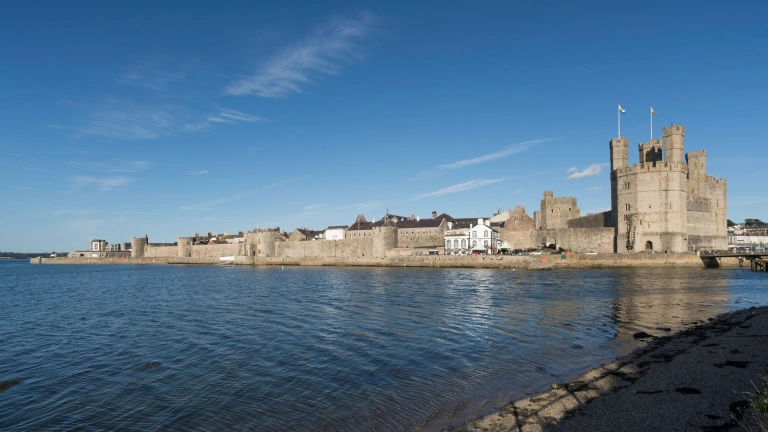
Caernarfon town walls
The walls were created to provide Caernarfon with a security blanket in the late 13th century. They stretch for almost 0.5 miles (0.8 km) and include eight towers and two gateways.
Work to open a section of the upper wall walk is currently underway, though it is possible to walk a near unbroken circuit at ground level. The promenade marks the site of the original wooden dock, built in the 13th century to receive building and food supplies. The 14th century Garrison Chapel of St Mary is partly built into the south west tower and is still in regular use for services. The Golden Gate (Porth yr Aur) was the seaward entrance and now houses the Royal Welsh Yacht Club. At the opposite end of High Street is Eastgate (Porth Mawr), originally it was the main entrance to the town and housed the Exchequer. It is currently being redeveloped by Cadw to access the upper wall walk and will also serve as holiday accommodation.
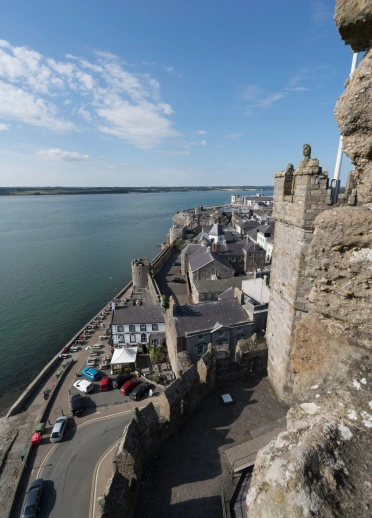
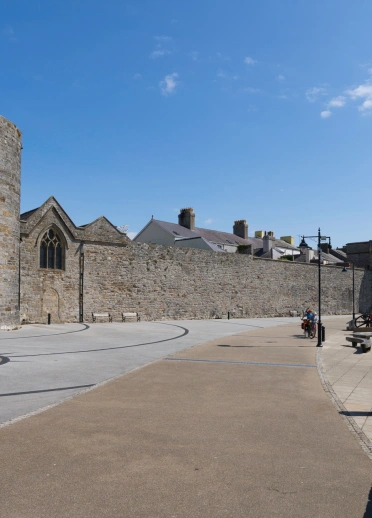
Caernarfon town
Built as an English colony in the 13th century, today Caernarfon has one of the highest proportions of Welsh language speakers.
Intensely proud of its heritage and culture, the town is today a celebration of all things Welsh, from the Red Dragon (Y Ddraig Goch), hoisted on the town’s buildings, to its galleries and shops showcasing welsh art, photography and local crafts.
Cafés, pubs and restaurants offer a range of locally sourced produce and traditional menus. Your clients can rub shoulders with locals as they enjoy a bowl meat and root vegetable stew (cawl), meat and root vegetable stew (lobscows), or rich fruit tea cake (bara brith), as well as the opportunity to hear one of Europe’s oldest living languages.
Locals would recommend a drink on the sea wall by the Anglesey Arms, once the Customs House, or at the sixteenth century Black Boy Inn.
Group visit information: Drop off point for coaches in Castle Square with long stay parking at Victoria Dock and a fee paying car park next to the castle. Recommended visit time 2hrs.
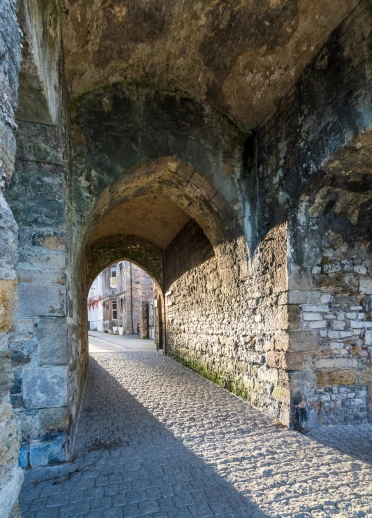
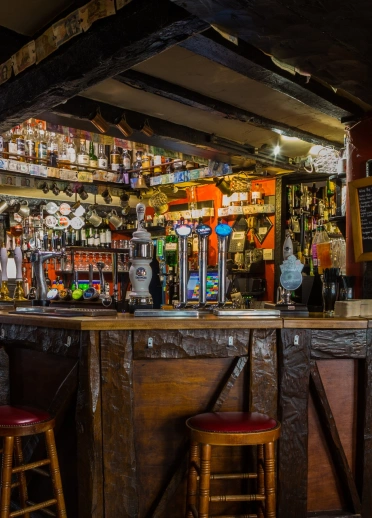
Beaumaris Castle
Beaumaris Castle was the last castle built by Edward I towards the end of the 13th century, although it was never finished and is known as the greatest castle never built. The site chosen on the ‘beautiful marsh’ gave Edward’s master architect, James of St George, the freedom to design the perfect concentric castle, with multiple rings of defensive lines including its water filled moat. Highlights include the dock with its original tether ring, the gargoyle waterspout on the south wall of the inner gatehouse, the chapel in the east tower of the inner ward. Interpretation boards and an exhibition explain the castle’s history. There is a photo opportunity by the entrance over the moat.
Whilst in town, visit the Victorian Beaumaris Gaol and Beaumaris Courthouse. There are also many gift shops, galleries and eateries in the pretty town. Coaches can drop off and pick up clients opposite Spar shop in Castle Street. Coach parking is 300 yards past the castle on the left.
Group visit information: Drop off point for coaches, ample (fee paid) parking for coaches on Castle Street, toilet facilities by the entrance (fee charged), on-site gift shop. Recommended visit time 1hr.
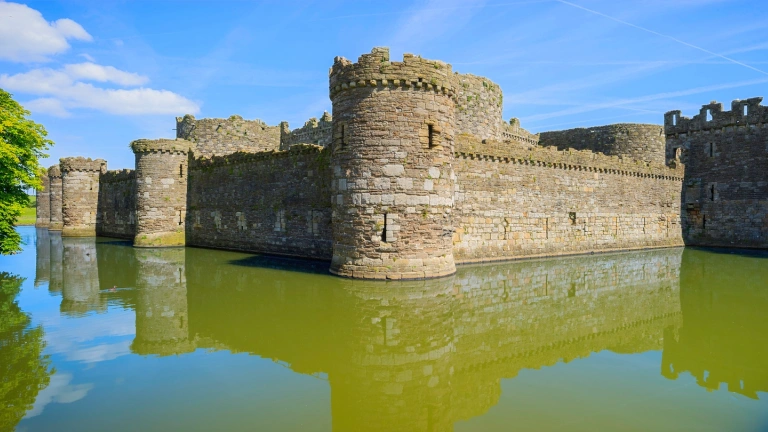
Castell Harlech (Harlech Castle)
Construction of Castell Harlech (Harlech Castle) began in April 1283 and was completed within 7 years. Taken by Welsh rebels, it became home to Owain Glyndŵr and his family, and was the setting for one of his parliaments. It was retaken with the help of ‘the king’s daughter’, a massive cannon which famously burst during the onslaught. Further sieges during the Wars of the Roses and the English Civil War have led to speculation and disagreement as to who exactly were the Men of Harlech. It is arguably Edward I’s most dramatic castle location as it perches on the edge of a cliff looking out to sea.
Highlights include the collection of stone cannonballs in the gatehouse, a legacy of one of Harlech’s many sieges, the surviving chimney stacks above the gatehouse, the original lime plaster still visible on the walls and the panoramic view out to the sea, which once lapped the castle rock.
Group visit information: Fee paid parking. Coach parking is available at Bron y Graig Uchaf. Contact the castle to receive suitable directions for coaches to reach the car park. On-site rest room facilities, exhibition, café and gift shop. Recommended visit time 1hr.
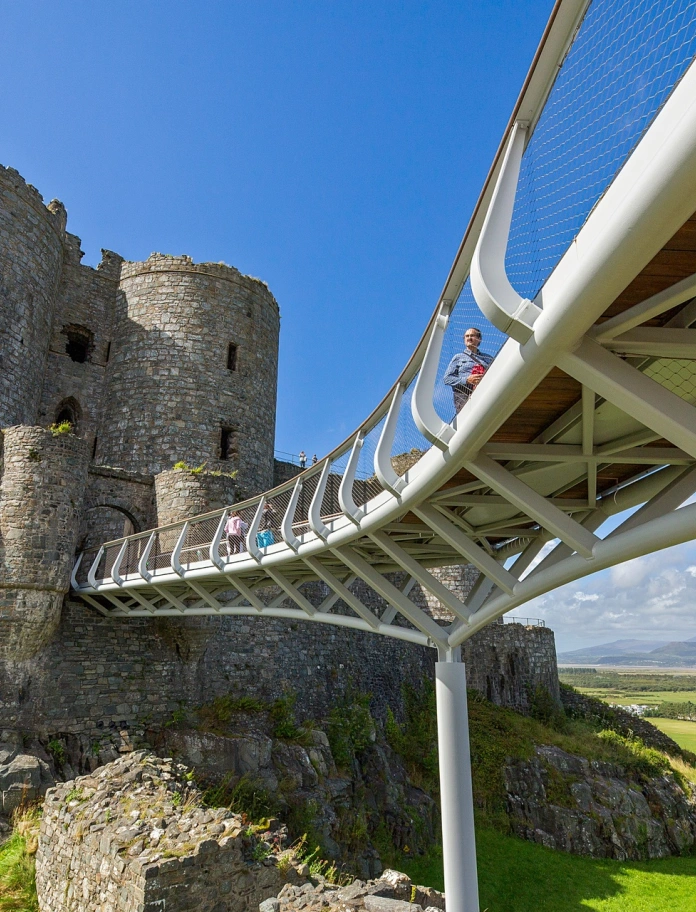
For opening times, prices, access, group discounts and complementary site for group booking visits and current advice please visit Cadw group bookings.

